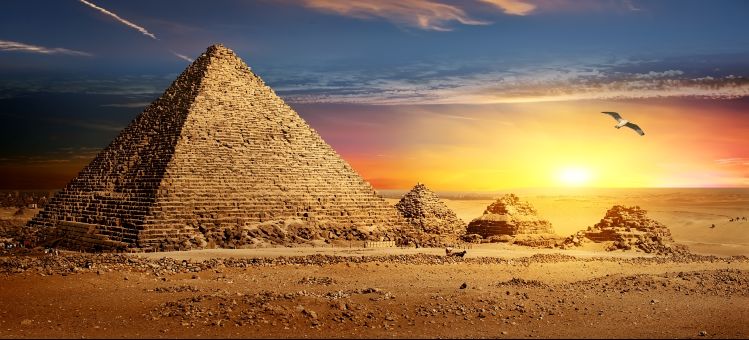- Amenhotep III was one of the wealthiest pharaohs and people in the world, adjusted
- Retirement in Ancient Egypt involved putting money and art away in tombs
- Retiring today involves saving money and making smart decisions
Ancient Habits
For the pharaohs of Ancient Egypt, and for the workers who lived in the country, there was no real concept of retirement. People worked until they were too old or frail, and then they moved on to doing something else that was beneficial after they were no longer able to work the fields. One of the professions that the sages recommended to young people was being a scribe.
Field work and farming was as difficult in Ancient Egypt as it is today, and in manner ways much harder, as water had to be brought to the fields through a series of canals or channels, and found via means of a shaduf. Large, modern-day farms in America are far removed from the farms and fields or the ancient world. And working the fields was something families would do together, depending on their wealth, hiring out people when it was possible, and being conscripted by the pharaoh to do other work when the wheel of the year turned and Nile flooding replenished the rich soil.
Egypt And The Afterlife
Instead of retirement, the Ancient Egyptians planned for their days after death by saving money, statues, linen and more for their tombs. It was believed that after a person died, part of them lived on, and that part inhabited the ba bird that came back to the tomb and reveled in the beautiful items and artifacts included in the tomb furnishings. For those who were unable to afford the luxurious, but expensive, art of embalming at the highest levels would opt for something a little less expensive, perhaps, than the days in natron.
Beyond the tomb being important for the soul to return to, there needed to be representations of things a person might need, and this included everyone, from pharoah to lowest peasant. Everyone wanted someone else to work for them in the afterlife, so there were shabti statues to toil. If there wasn’t real food there would be pictures of it, so that there could be feasting on the representation of it, if nothing else. The Ancient Egyptians often had picnics at the tombs of their ancestors, which very likely led to many of the tombs being robbed in antiquity.
Instead of a retirement like we see it, the Egyptians saw the time after death as their reward for all their strife and hard work on Earth.
Modern Retirement
Instead of putting all of our retirement savings into tombs, Americans today are saving up so that they can enjoy their retirement. Some items are the same, as in the gold and silver that are saved so assiduously by so many. Some items are different, and could hardly have been imagined in the ancient past. Crypto exchanges and currency, different business opportunities, chances to invest in your own self – there are retirement savings and the possibilities are practically endless. Especially with self-directed retirement options, there really are chances to live like a pharaoh.
Self-Directed IRA
A Self-Directed IRA LLC (SDIRA) is a type of individual retirement account that allows retirement investors to use their IRA funds to make alternative asset investments. Self-Directed IRAs are similar to traditional IRAs, but they provide more investment options to IRA holders. By using this retirement structure, you can diversify your investment opportunities and invest outside of stocks, bonds, mutual funds, and other traditional assets. You can still make traditional asset investments, but if you’re more comfortable investing in assets like real estate and precious metals, the Self-Directed IRA LLC allows you to do so. Ultimately, this diversifies the assets inside of your retirement account.
Solo 401(k)
A Solo 401(k) plan is a 401(k) qualified retirement plan that was designed for self-employed individuals and small business owners with no full-time employees, excluding a business partner and spouse. Much like the traditional 401(k), this unique plan encourages individuals to save for retirement in a tax-advantaged environment. When participants contribute funds into the Solo 401(k), taxes on the funds will be deferred until the participant takes a qualified distribution.
The Solo 401(k) is an IRS-approved plan that has the same rules and requirements as a traditional employer-sponsored 401(k). However, the Solo 401(k) allows participants to make annual contributions to the plan as both an employee and employer, which ultimately increases the yearly maximum contribution limit.
Also known as a self-employed 401(k) or individual 401(k), individuals can benefit even if they generate a portion of their total income through self-employment activities, such as a freelance gig.
Retiring In Ancient Egyptian Style
While it may be difficult to ever catch up with Amenhotep III, who lived thousands of years ago, in terms of wealth and buying power, there are more chances than ever to save for retirement and do the best you can for yourself and your family, and your future. As for Amenhotep III, the discovery of an additional city north of Malqata may show that his retirement plan was even bigger than previously thought!










